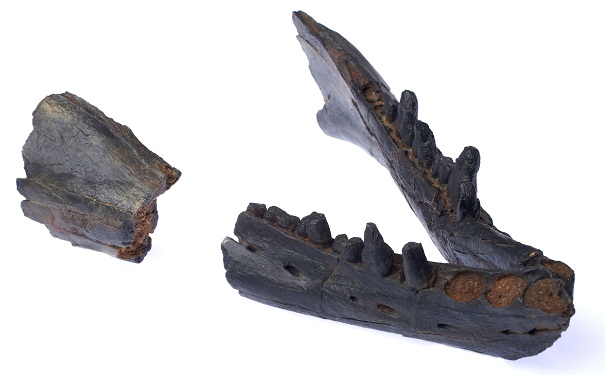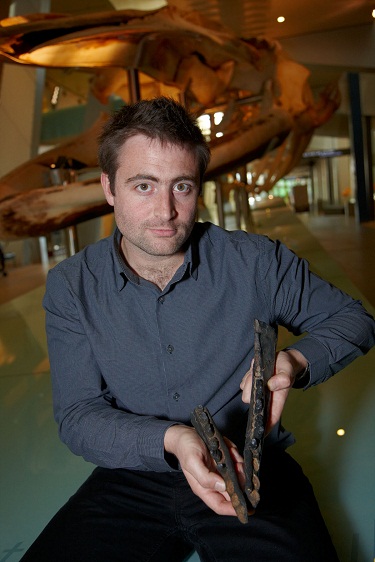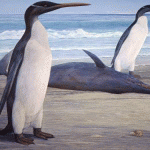
- The fossilised jaws of the extinct baleen whale Janjucetus hunderi. Photograph by Jon Augier; Copyright Museum Victoria
Baleen whales first evolved their huge mouths for capturing large prey, a new study has shown.
Today’s baleen whales, such as the blue whale, feed on small organisms like krill by filtering them through their toothless mouths. However, a fossilised lower jawbone from a Janjucetus hunderi, an early relative of modern baleen whales, suggests this wasn’t always the case.
The25-million-year-old fossil revealed that the earliest baleen whales lacked one of the characteristics of all living and most fossil baleen whales- a loose lower jaw joint. “This is compelling evidence that these archaic baleen whales could not expand and rotate their lower jaws, which enables living baleen whales to engulf and expel huge volumes of seawater when filter feeding on krill and other tiny animals,” said palaeontologist Erich Fitzgerald from Museum Victoria and lead author of the study, published in Biology Letters.
The research challenges the theory that a loose lower jaw joint, which is crucial for filter feeding, was present in the earliest baleen whales. All the fossils previously studied indicated that baleen whales had a specialized elastic lower jaw joint that permitted the jaws to expand outwards, as well as rotate independently around their long axis. “This discovery of a primitive rigid jaw joint in Janjucetus, one of the most archaic baleen whales, now shows that this was not the case,” Dr Fitzgerald said.
The fossil suggests the skulls of the early baleen whales were structured to enable them to suck larger prey, such as octopus and squid, into their mouths. The first step towards the whales’ huge mouth may have been the increasing width of the upper jaws, enabling the whales to suck up their prey one at a time.
By switching from suction- to filter-feeding during the course of their evolution, the baleen whales gained access to an extremely productive source of energy, as their new prey would have been tiny but abundant. “As for exactly how the transition from suction to filter feeding may have occurred, we’ll just need to find more fossils.”
The fossilised jaws of the Janjucetus were originally discovered in the mid-1970s in the Victorian town of Torquay by Brian Crichton, a dedicated amateur fossil collector. Dr Fitzgerald first saw this fossil while visiting the private fossil collection of Mr Crichton in early 2008.
“I opened a drawer of fossils and immediately recognised the characteristic shape of the lower jaws of a whale. The teeth in the jaws indicated that these were the jaws of a toothed mysticete whale,” he said.
“It was only when I turned one of the jaw bones over to find a rough joint surface that I realised the scientific significance of this specimen: this was the first discovery of a baleen whale that did not have a loose lower jaw joint. Understanding the importance of this fossil, Mr Crichton kindly gave permission to borrow and study it, which I began in 2009 and completed in late 2010.”






